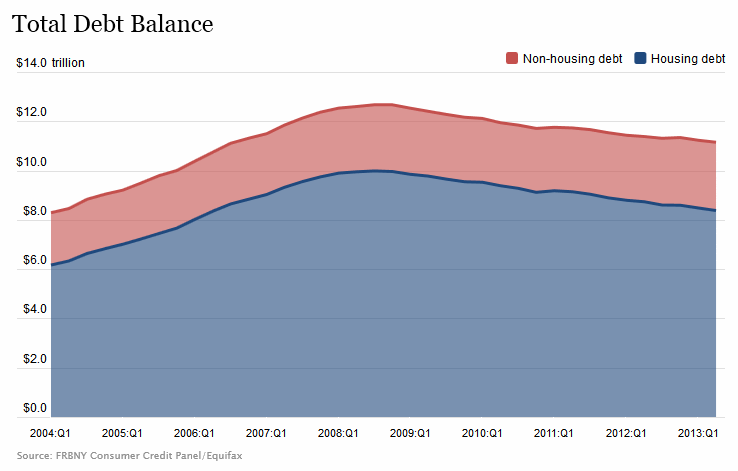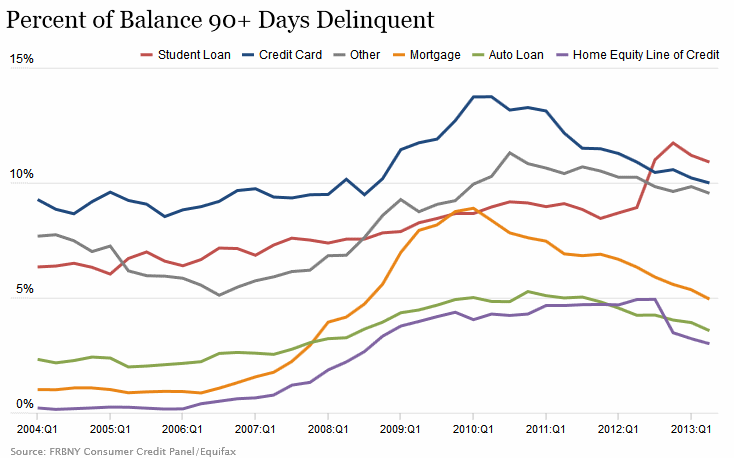In spite of a huge surge in auto loans, Americans reduced their overall household debt by $78 billion during the second quarter the Federal Reserve Bank of New York said today. Total household indebtedness fell to $11.15 trillion in the second quarter, a decrease of 0.7 percent from Quarter One and 12 percent below the peak debt of $12.68 billion reached in the third quarter of 2008.
The declining debt was due in large part to a reduction in its largest component, mortgage debt, which fell $91 billion from the first quarter to $7.,84 trillion. Balances of home equity lines of credit (HELOCs) declined as well, by $12 billion to $540 14billion. Mortgage originations rose for the seventh straight quarter to a total of $589 billion.

While outstanding student loan debt and credit card balances each increased by $8 billion during the quarter it was auto loans that kept overall debt near Q1 levels. Auto originations totaled $92 billion in the quarter, the highest level since the third quarter of 2007 and outstanding auto loan debt increased $20 billion, the ninth consecutive quarterly increase and the largest in that sector since 2006.
The rate of 90+ day delinquencies for all household debt declined to 5.7 percent from 6.1 percent in Q1 and the rate for every individual component of household debt also fell. The mortgage delinquency rate was 4.9 percent, down from 5.4 percent and HELOC delinquencies fell from 3.2 percent to 3 percent. Nonetheless 200,000 individuals had a new foreclosure notation added to their credit reports during the quarter, the first increase since Q1 2012.

"Although overall debt declined in the second quarter, households did increase non-housing debt, led by rising auto loan balances," said Andrew Haughwout, vice president and research economist at the New York Fed. "Furthermore, households improved their overall delinquency rates for the seventh straight quarter, an encouraging sign going forward."
The Federal Reserve Bank of New York's Household Debt and Credit Report is based on data from the New York Fed's Consumer Credit Panel, a nationally representative sample drawn from anonymized Equifax credit data. The report provides a quarterly snapshot of household trends in borrowing and indebtedness, including data about mortgages, student loans, credit cards, auto loans and delinquencies.







